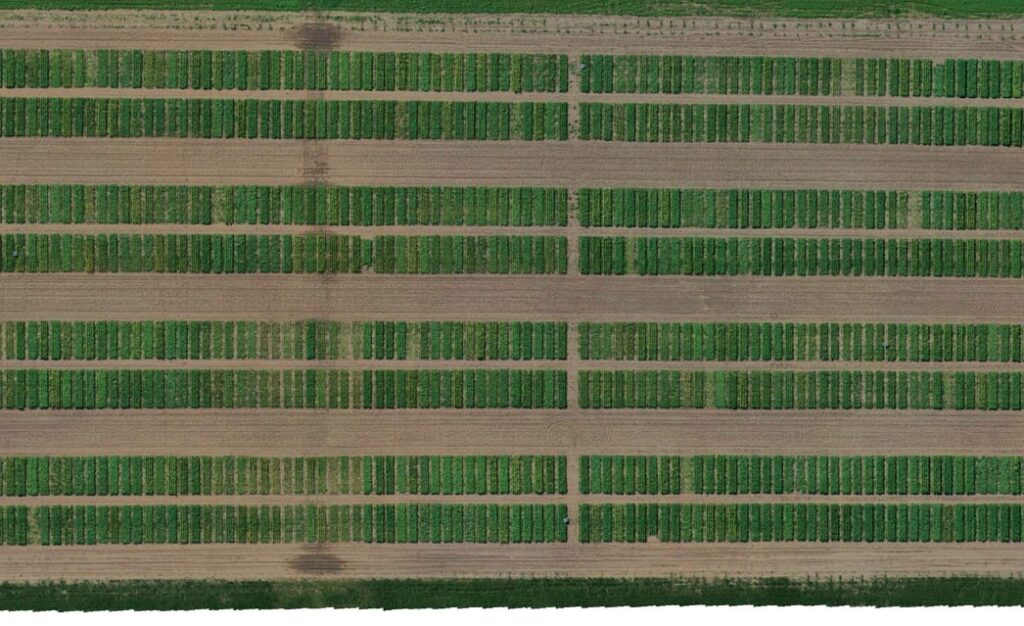Saskatchewan Bulletin
Germplasm enhancement research is important to Canadian Canola industry
Investing in research at the early pre-breeding or germplasm-enhancement stage provides the foundational pieces that complement commercial hybrid seed breeding programs and the ultimate release of new traits and hybrids. SaskCanola strategically invests in canola research, including several upstream projects in germplasm enhancement and trait development.
“Our pre-breeding research and innovation strategy encompasses germplasm enhancement, which includes identification, discovery and generation of new germplasm diversity and traits under selection,” says Sally Vail, research scientist and oilseed breeder with Agriculture and Agri-Food Canada (AAFC) in Saskatoon. “It also includes new tool development for trait selection. We are actively working in both of those areas across different projects.”
The goal is to develop new germplasm that is licensed to canola breeding companies to help make quicker progress by enabling them to start with germplasm already adapted to canola quality. Vail and AAFC research scientist Lone Buchwaldt are collaborating on a new germplasm diversity project improving sclerotinia resistance to canola quality breeding lines. Through Buchwaldt’s research, several sources of resistance have been identified across all Brassica napus lines; however not all sources have canola quality. Vail and Buchwaldt are partnering to introduce new resistance traits into canola quality lines with early flowering and maturity suited for the Prairies.

Other AAFC projects are looking to related species for new diversity. “Utilizing germplasm from the AAFC breeding programs for related Brassica species, we now have advanced populations generated from crosses between winter B. napus and canola quality B. juncea,” explains Vail. “We are working with commercial companies to see how these new lines fit in their hybrid canola breeding program, and if the new diversity has higher yield and better yield stability advantages associated with them.” Other projects focused on new disease resistance diversity include the development of clubroot resistance genes led by Fengqun Yu, and blackleg quantitative disease resistance led by Hossein Borhan.
A significant resource for assisting all of these germplasm advancements is the nested association mapping population (NAM) tool for B.napus led by Isobel Parkin, AAFC Brassica genomicist, in collaboration with Vail and other researchers. NAM allows researchers to identify the multitude of genes associated with complex traits and diversity within a wide range of breeding lines. The knowledge of associations between the genes and various traits yields practical tools and germplasm for plant breeders.
“All of these pre-breeding efforts are assisting us with developing an arsenal of different germplasm. This helps commercial breeding programs be positioned to respond quickly to different strategies and challenges,” adds Vail. “It is very exciting as a canola breeder to see all of these different germplasm enhancement projects and to be a potential user of these developments down the road.”
Alongside germplasm enhancement is specific trait development work, with AAFC leading or collaborating on various projects looking at new traits for B. napus. “All of these projects use the NAM resource and genomic information paired with various breeding tools for efficient selection of new traits and potential canola quality breeding lines,” explains Vail. Other research platforms such as the Plant Phenotyping and Imaging Research Centre (P2IRC), led by Andrew Sharpe at the University of Saskatchewan (U of S), focus on developing new tools for plant breeders to advance key prairie crops including canola.
“We really value the research investment by SaskCanola, growers, and other funders in recognizing the importance of germplasm enhancement work,” says Vail.
“Working with different breeders to address the long-term needs and being able to transfer new resources to commercial companies who are able to move forward and scale with great speed is quite remarkable. There is so much intellectual power in the canola industry. The underlying strength comes from the different perspectives of public and private plant breeders, commercial industry, canola organizations and growers collectively. It is very exciting to see that together we have the right platforms to move the industry in the right direction.”
See reports for SaskCanola-funded research projects at saskcanola.com/research.
Canada Grain Act Review – Supporting Statement by SaskCanola
Stakeholders in the grain value chain widely recognize that the industry has changed substantially since the last comprehensive review of the Canada Grain Act over 35 years ago. SaskCanola, along with the other representatives of the crop sector, advocated for the Canada Grain Act to be changed to reflect the size and sophistication of today’s farms.
SaskCanola believes that the Canadian Grain Commission must maintain its mandate of protecting farmer interests.
In early 2021, SaskCanola actively participated in the development of submissions by the Canadian Canola Growers Association and the Grain Growers of Canada, and endorsed their positions. We also reiterated and reinforced the issue of farmer protection, as well as the need for increased price transparency.
SaskCanola believes that the Canadian Grain Commission must
maintain its mandate of protecting farmer interests. The Grain Commission must provide the protection needed at the point where the grain leaves the ownership of the farmer at the grain terminal and becomes the property of grain companies. In addition, over 50 per cent of canola is now delivered to a crushing facility. These deliveries have to have the same protections that are provided at primary elevators.
Producer protections are in place to ensure that growers are treated fairly and that their risk is limited. Protections also demonstrate accountability of the grain system to producers, strengthen growers’ position as an important part of the grain production process and support the development of strong producer-elevator relationships.
The review of the Canada Grain Act is an opportunity to modernize and update the Act to accommodate all parties involved in the production and export of Canadian grain. SaskCanola plays an important role in ensuring producers’ voices are heard, and that their concerns are thoroughly addressed and considered. To view our full statement, please visit SaskCanola.com.





